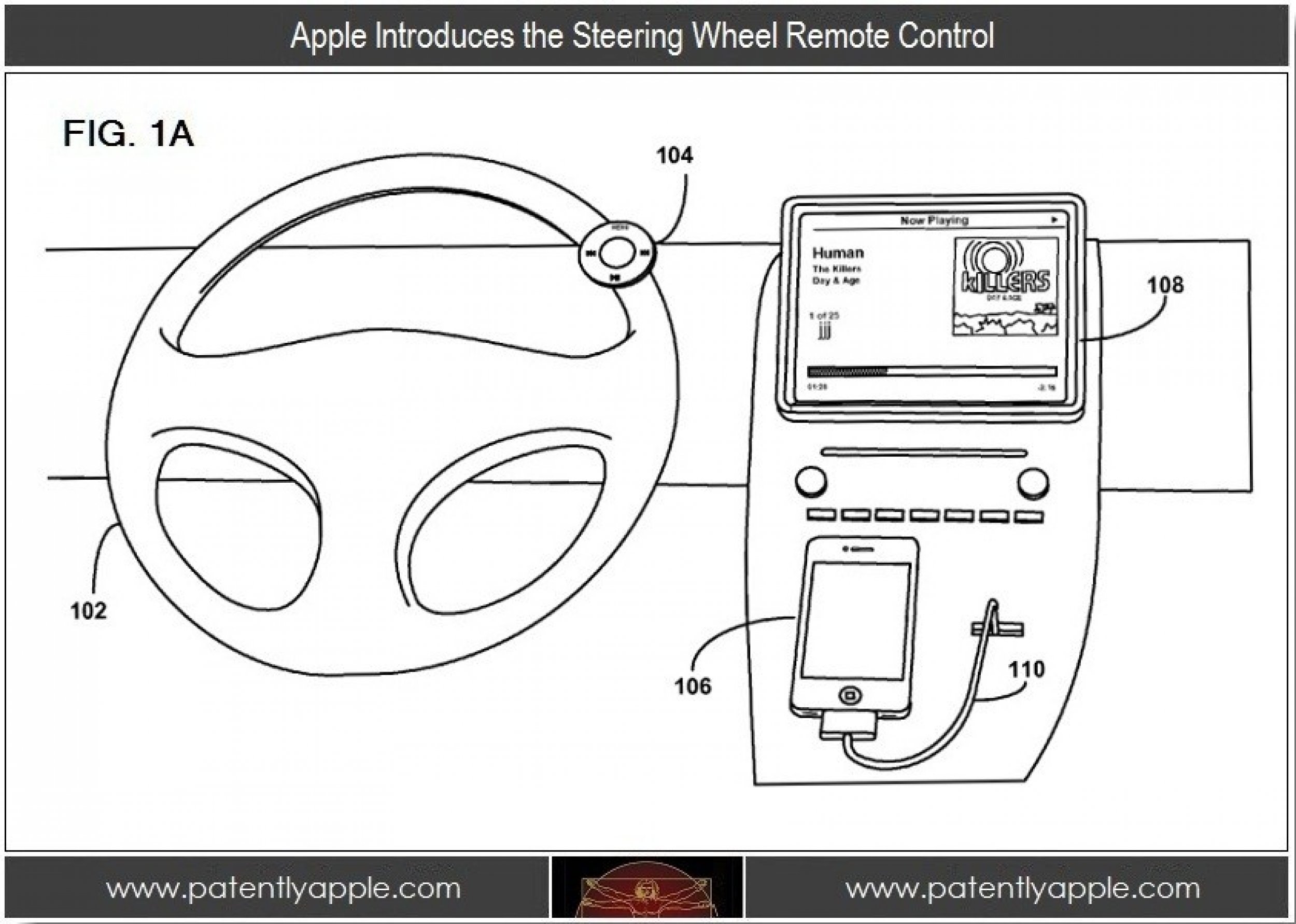Apple Patents Steering Wheel Remote Control For Safer 'Hands-Free' Driving
As smartphones and tablets become more ubiquitous in our ever more mobile world, driving becomes an increasingly dangerous activity. Local and federal governments are trying to enact hands-free laws to keep people's attention on the road, and devices and technologies like Bluetooth are doing their parts to keep drivers safe. Apple has created ways to make its iPhones completely hands-free (thanks to Siri and VoiceOver), but iPods, which are often the music players of choice now over in-car CD players and radio systems, still require a drivers' hands and attention to operate.
Apple hopes to make all drivers safer with a new invention that lets users wirelessly control the music playing in their car without ever taking their hands off the steering wheel. In a patent that was quietly granted on Tuesday, Apple describes a remote control that can be clipped onto any car's steering wheel, which borrows largely from the original iPod clickwheel but also adds a new touch-sensitive element to the design.
In its patent filing, Apple explained that most cars contain in-vehicle entertainment systems that can interface with a portable media device (like an iPod, iPhone or iPad), which essentially allows riders to control their music players through the in-car system. Yet some in-car entertainment systems can't control an external device, so users must use the controls on the iPhone or iPod itself. This can be extremely dangerous, as adjusting iDevices takes precious attention away from the road.
Apple's solution to this attention dilemma is a wireless remote control that can fit on any car steering wheel, which can be configured to control any portable media device. The remote is essentially a faceplate with a clickwheel identical to that of the iPod, except that this clickwheel is touch-sensitive. The sensors on the faceplate can detect pressure from a finger, but can also detect the location and magnitude of the pressure sensation thanks to a sensing mechanism based on capacitive sensing, resistive sensing, and surface acoustic wave sensing.
The remote connects to the steering wheel using hinged clamping feet, which can accommodate steering wheels with various thicknesses in a few ways: It can move laterally along the steering wheel, and the hinges can also move mechanically closer or farther apart to clamp onto different-sized wheels. Since the clamps at the bottom of the remote can be moved to any point in the steering wheel, the faceplate itself can be rotated in 360 degrees to accomodate any orientation on the wheel.
Apple and Cars: A Future Together
The struggling automobile industry is ripe for disruption, and Apple could definitely help in this department. While it's great that Apple is building tools for easy and safe use of iPhone, iPod, and iPad devices while driving, Apple can do much more.
If Apple really wanted to help drivers, it would work with a company it likes (maybe Mercedes, Steve Jobs' favorite car company) to build a better in-vehicle system for entertainment and navigation. An in-car system by Apple would be extremely intelligent, and it could show users what they need to know about their driving habits and fuel consumption while also offering plenty of options for finding locations and getting directions to them, as well as playing music -- via Internet radio like Pandora or from a nearby iPod.
In fact, it looks like Apple may already taking this direction. In February, Mercedes Benz unveiled plans to use Siri, Apple's virtual personal assistant exclusive to the iPhone 4S, to power its A-class electronics system called Drive Kit Plus, which will essentially let drivers access their iPhone apps while driving using voice commands. Yet, a technology company with the clout and power of Apple should not have to be a third-party accessory maker for cars. No, Apple should be thinking much bigger than that: If Apple is so set on building complete closed-end systems, maybe it should consider entering the car-making business. Apple has nothing to prove in the world of technology, but maybe if Google can perfect its driverless-car, Apple will feel compelled to build a car of its own.



© Copyright IBTimes 2024. All rights reserved.






















